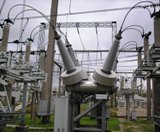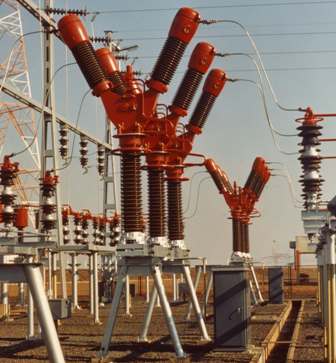Removal of damaged 110 kV circuit breaker for repair
 If a broken switch is found on one of the 110 kV connections of the switchgear, you need to know how to properly remove it for repair.
If a broken switch is found on one of the 110 kV connections of the switchgear, you need to know how to properly remove it for repair.
What are the symptoms of a broken switch? In this case, it all depends on the type of switching device. If this Circuit breaker SF6, then one of the characteristic signs of its damage is a decrease in SF6 gas pressure. If the SF6 gas pressure in the circuit breaker is less than the allowable value, the corresponding circuit breaker cannot perform the closing or opening operation.
If the oil switch is damaged, the oil level drops below the minimum level. In both cases, when the switching operation is carried out under load or under voltage, more serious damage can occur to the circuit breaker, as well as to the elements of the distribution equipment located in the immediate vicinity.
In addition, signs of failure of a high-voltage circuit breaker, regardless of its type, are:
-
breaker drive failure;
-
violation of the integrity of the circuits of the solenoids for turning on and off the electromagnetic drive or the electric motor of the spring drive spring;
-
violation of the integrity of support and traction insulators;
-
extraneous noise, crackling, uncharacteristic of the normal operation of the switch.
If during the inspection of the equipment a failure of one of the 110 kV circuit breakers is found, it must be immediately taken for repair. Below we will look at the procedure for removing a damaged 110 kV circuit breaker for repair.
As mentioned above, no-load or load operations should be performed on a damaged breaker. Therefore, if it is necessary to take the damaged switch for repair, first remove the voltage from it.
If there is a load on this connection, it should be removed. For example, this line feeds one of the 110 kV substations. Operational switching is done at this substation to remove the load from this power line.
If the broken switch link supplies power to that substation, then it is necessary to transfer the substation's load to other power lines.
When the load is removed, the voltage is removed from the circuit breaker. In this case, there are several ways. It is possible to remove the voltage by disconnecting the bus and line disconnector of this connection.
If for one reason or another it is not possible to remove the voltage from the disconnectors, then the voltage must be removed from this switch by disconnecting the bus system (section) of this substation and, if necessary, disconnecting a disconnector (switch) in the other end of the line.
For example, five connections are fixed behind one of the 110 kV bus systems and the voltage must be removed from the circuit breaker of one of the connections. In this case, all connections of this busbar system, except for the connection with a broken breaker, are re-fixed to another busbar system.
After the connections are re-fixed, the bus connection switch is turned off, which removes the voltage from the bus system, including the failed switch.
When the voltage is removed from the switch, it is necessary to disassemble the circuit (if this has not been done earlier), as well as to ground this switch on all sides from which voltage can be applied.
If a connection with a broken circuit breaker cannot be disconnected during the repair work, it can be energized (if possible) via the busbar switch. To do this, the bus is disconnected from the damaged switch and the line is connected directly to the busbar system.
In this case, the protective functions of this 110 kV line are performed by a busbar breaker, which is set to the necessary protective parameters in accordance with the protection settings of the damaged breaker.
See also on this topic: Conclusion for the repair of the 110 kV busbar system

